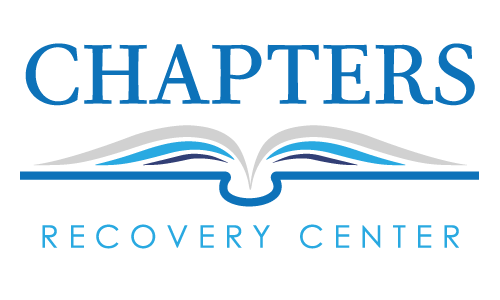
There is a multitude of theories and speculations surrounding the condition, but up until today, there is no one solid lead as to what causes addiction.
The addiction cycle, however, is not the end-all and be-all of the study of substance abuse disorder. Rather, it is a stage-by-stage look at how people falling into addiction behave at the different stages.
It should be noted that while these stages do apply to many people with addiction, different people still have different dispositions, tolerances, and thresholds. There could be people who might skip from one stage onto another stage, or others might just manifest a few of the stages.
It should also be noted that just because it is called a “cycle,” which suggests a repetition of all the stages once the last stage is completed, it does not hold true for everyone to repeat the process all over again. There are many who make a full recovery and go on to live a full, healthy, and normal life after rehabilitation, even as there are also those who don’t.
What Are the 6 Stages of the Addiction Cycle?
The established stages of the addiction cycle are made up of a series of behavioral changes in a person. They start from when the substance is first tried out to the point where recovery appears to have been achieved, only to find out that the urge is simply too great.
Each stage is observed to feed into the next, with the progression of substance abuse steadily getting worse. It would appear that having established some form of pattern in the cycle, intervention, and stoppage of the cycle would be easier and more effective. With the ambiguous and unpredictable nature of human behavior, however, it is rarely the case, if at all. It must be noted that substances tend to re-wire critical behavioral and thinking patterns, which is why therapy is often long, arduous, and not always 100% effective.
Stage 1: Initial Use
Giving in to curiosity does not always turn out well for people. In the case of trying out substances for the first time, there are people who try them out and find they don’t like them, and it stops there. In others, their curiosity remains unsatisfied, and this could get the better of them because they will always wonder what it is about substances that make people so addicted.
In other cases, the one trying it out was not curious at all, but was merely at the wrong place at the wrong time, with the wrong people. Many have become victims of peer pressure, particularly adolescents still trying to find their niche in the crowd. There are young ones who feel the need to fit in and do what everyone else is doing, even if it becomes a problem later on. Many young people are initiated into drug and alcohol use this way, as they are encouraged to try it out so that they could be with the crowd and not looked at as someone who could not be trusted.
There are others still that only get initiated into substance use because they were simply looking for a “way out.” This is the case with victims of abuse, of neglect, or with people dealing with unbearable stress at the time. These people could be those who would normally not try out substances on a normal day, but they could be going through massive emotional, mental, or physical strain or agony that their resistance is at its lowest, and they would welcome any release from what they were facing at the time.
Stage 2: Abuse
After the initial use phase and the various experimentations that come in its wake, the next stage is the actual substance abuse stage. This is the point where the person uses the substance with frequency. This frequency could be based more on a pattern rather than the urge to do it. The urge will definitely build to a point where patterns don’t exist anymore, but not at this stage.
The patterns that emerge could either have real triggers, since not everyone is equipped with ample coping skills to help through a very rough patch. The triggers could vary widely between physical ones, such as those who suffer from chronic pain, who later discover that their painkillers tend to create a euphoric sense in them. The trigger could also be anchored on some mental need, such as those who take stimulants because they have to review for a test, or for someone who needs to be awake and alert enough to do a presentation.
The trigger could also be a psychological need, particularly for those who experienced specific trauma that causes them great distress, much like post-traumatic stress disorder (PTSD). To people who cannot relate to the triggers, it will only seem like the user will grab on to any excuse to take drugs or alcohol.
Stage 3: Tolerance
One of the unique qualities of the human body is the ability to adapt to many things over time. This is shown when someone with a substance abuse disorder begins to require higher doses or amounts of the substance they abuse, mainly because the amount that they used to take does not give them the same experience as before.
Tolerance is actually a clear indication that the nervous system, particularly the brain, has already changed in response to whatever substance is being abused. This is not necessarily a good thing as it might only be the brain that has learned to adapt, and the other organs have not, particularly the liver. The more toxic substances a person takes, the more work it is for the liver to filter out these toxins.
The tolerance stage is where things actually start becoming dangerous, because it is progressive, and not in a good way. Increasing the dosage of whatever substance is being taken might work for a while, but given enough time, tolerance will again kick in, and an even higher dosage is needed. This practically ensures that the person does not only sink deeper into substance abuse, but they are also digging deeper into addiction by creating dependence on the substance.
Stage 4: Dependence
By now, the brain and body of the user have become so reliant on the substance that the user believes the substance is essential to staying alive. This is, of course, an illusion because even as the user claims using the substance keeps them alive, it is actually slowly killing them.
To clarify this point, there are some people who do need to use drugs or medication to keep them alive, mainly because they have a condition that requires taking it. One example is someone who suffers from chronic asthma. Without frequent use of medications like albuterol, which opens up the medium and large pathways in the lungs, people with asthma could not breathe. This might create a belief that they are addicted to their asthma spray because they are dependent on it, but this kind of medication is not habit forming.
The psychology behind it, however, is quite similar. Some drug users may have a need for the medication they are addicted to, but not in the quantity that substance abusers take it. People who are addicted to painkillers are known to take pain pills even if they don’t suffer from any pain, or from the level of pain that requires taking pain pills. This is why there is an existing argument that dependence on medication immediately means an addiction, and this is also why the dependence stage is separate from the addiction stage in the addiction cycle.
Stage 5: Addiction
For the sake of argument, someone is well into the addiction stage of the addiction cycle if they manifest at least six of the symptoms of addiction as defined by the Diagnostic and Statistical Manual of Mental Disorders (DSM-5). These symptoms include:
- Using more of the medication than prescribed
- Inability to stop using the medication or substance
- Experienced relationship issues because of substance use
- Spends long periods of time seeking, using, or recovering from use of the substance
- Prefers to spend more time on substance use than in any other activity
- Inability to do responsibilities due to substance use
- Craves the substance or medication
- Continues to use the substance regardless of negative health effects
- Continues use of the substance even in dangerous situations (ex. driving, operating heavy machinery, etc)
- Develops a tolerance for the substance or medication
- Experiences withdrawal symptoms when not using the substance
Even a few of these symptoms are already indicative of a substance use disorder. Having two to three symptoms constitutes a mild substance use disorder, while having four to five is already a moderate substance use disorder. Regardless, there is still debate as to these symptoms on the basis of the condition of the person who suffers from a chronic illness that requires frequent medication use.
People who suffer from a chronic illness also manifest negative side effects, which could be looked at as symptoms, in the periods that the previous dosage of their medication wears off. These technicalities often spur much dispute in classifying someone as suffering from addiction, mainly because someone who truly needs medication frequently, and suffers from negative side effects if they don’t get it, will definitely manifest the symptoms of someone with addiction.
Stage 6: Relapse
There are specific substances that, once tried, may create a massive dependence on it that quitting may be next to impossible. This is because the urge to use the substance again stays in the system, and could lie dormant for long periods of time, and then come out when the person’s resistance to the urge is at its weakest.
Relapses, even after a long period of rehabilitation, is not uncommon. This stage of the addiction cycle, where one goes right back to using substances even after trying to get on the road to recovery, is why addiction is said to be a cycle. A relapse is a real threat to anyone who suffers from addiction because just as medical conditions like asthma and diabetes could manifest once more even when thought to have been cured, the urge to take substances could come up once more, and with greater intensity in some people than before.
This is why specific psychotherapy approaches, such as cognitive behavioral therapy (CBT) and dialectical behavior therapy (DBT), are prescribed to people undergoing rehabilitation treatment. There is a need to go deeper into a person’s psyche and “implant” preventive measures for when the possibility of relapse does come up. Relapses are seen as particularly damaging because it is seen as the destruction of the trust invested in the person by friends and relatives who helped them through rehabilitation.
Breaking the Addiction Cycle

The window of opportunity exists in the addiction cycle stage that also includes relapse, because at this point, the person has achieved a semblance of normal thinking and a measure of restored willpower, free from the influence of substances.
With the ability to think restored, a person in danger of relapse could engage in a different cycle, one that leads to recovery, and it comes with its own different stages, including:
Precontemplation
This stage is when the person has not actually thought about getting back into using substances, but is already being haunted by the “phantoms” of the urge to use once again. Whether they feel that it is due to fear, self-doubt, or any other emotion that could push them to use once more, people in recovery will always face this threat to recovery at one point.
Contemplation
Having identified that there is the threat of a relapse, the person could start to manifest thoughts of truly wanting to break the addiction cycle and not give in to the possible urge to use once more. This stage is characterized by the person engaging in active thoughts about how to prevent a possible relapse.
Preparation
This is the recovery stage where the person, whether still actively using drugs or is already in rehab, actually prepares to do something to either quit or prevent a relapse. This is an important stage because the user is starting to put effort into affecting a change in their habit of using substances
Action
This is the stage where a person who is still using reaches out to someone for help so they can stop the habit. For someone already in rehab, this is the stage where they admit to having urges once more, and seek further help from therapists to quell or remove the growing urge.
Maintenance
Having sought help, this stage is where the user engages and commits to a recovery program and all of its facets. There is a need for absolute determination in this stage because sticking to the program could prove to be quite difficult for many. For someone already in rehab and is in danger of a relapse, this stage is a renewal of their drive and motivation to continue with therapy and all other preventive activities that would help them overcome further urges to use once more.

